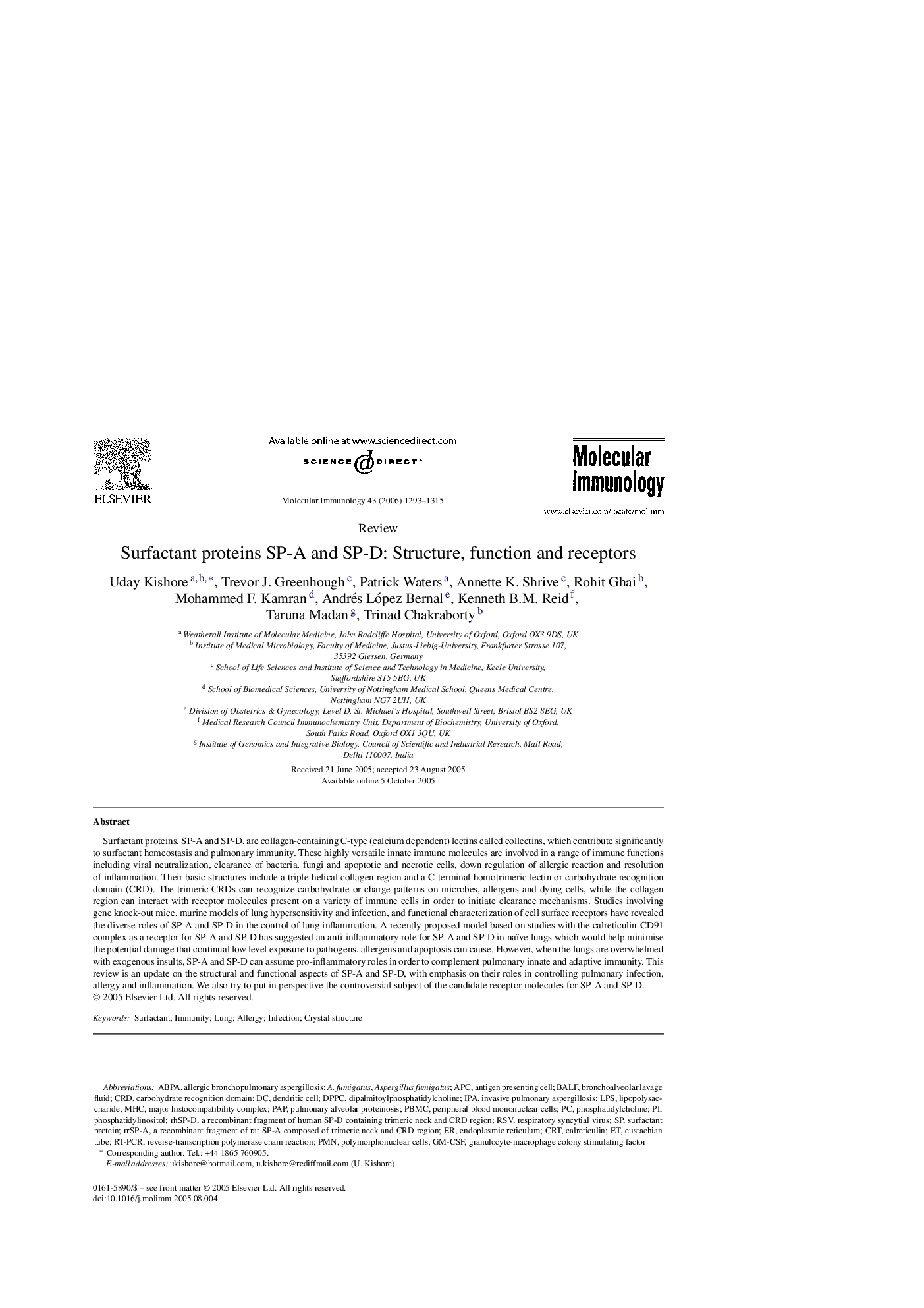| Article ID | Journal | Published Year | Pages | File Type |
|---|---|---|---|---|
| 2833542 | Molecular Immunology | 2006 | 23 Pages |
Surfactant proteins, SP-A and SP-D, are collagen-containing C-type (calcium dependent) lectins called collectins, which contribute significantly to surfactant homeostasis and pulmonary immunity. These highly versatile innate immune molecules are involved in a range of immune functions including viral neutralization, clearance of bacteria, fungi and apoptotic and necrotic cells, down regulation of allergic reaction and resolution of inflammation. Their basic structures include a triple-helical collagen region and a C-terminal homotrimeric lectin or carbohydrate recognition domain (CRD). The trimeric CRDs can recognize carbohydrate or charge patterns on microbes, allergens and dying cells, while the collagen region can interact with receptor molecules present on a variety of immune cells in order to initiate clearance mechanisms. Studies involving gene knock-out mice, murine models of lung hypersensitivity and infection, and functional characterization of cell surface receptors have revealed the diverse roles of SP-A and SP-D in the control of lung inflammation. A recently proposed model based on studies with the calreticulin-CD91 complex as a receptor for SP-A and SP-D has suggested an anti-inflammatory role for SP-A and SP-D in naïve lungs which would help minimise the potential damage that continual low level exposure to pathogens, allergens and apoptosis can cause. However, when the lungs are overwhelmed with exogenous insults, SP-A and SP-D can assume pro-inflammatory roles in order to complement pulmonary innate and adaptive immunity. This review is an update on the structural and functional aspects of SP-A and SP-D, with emphasis on their roles in controlling pulmonary infection, allergy and inflammation. We also try to put in perspective the controversial subject of the candidate receptor molecules for SP-A and SP-D.
